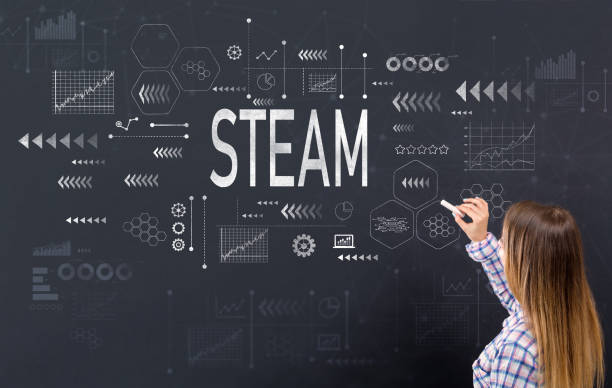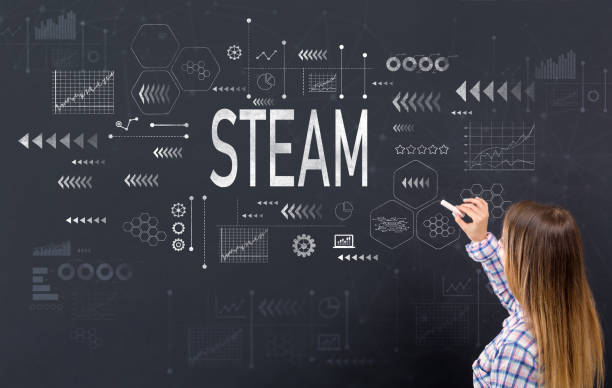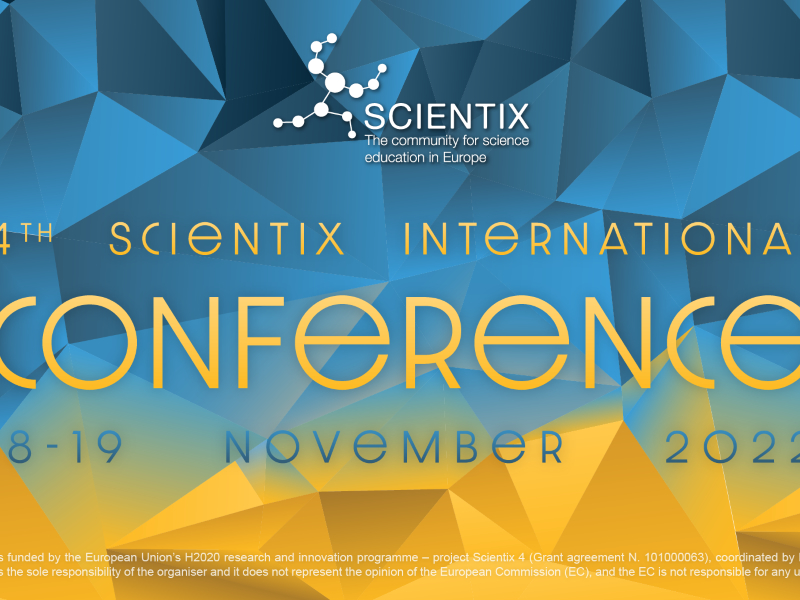STE(A)M Experience in Italy

STEAM with young woman writing on a blackboard

- Adapt skills to the needs of the economy,
- Bring research and business closer together,
- Innovate teaching and training,
- Foster female empowerment in society and the world of work.
There are many objectives that can be achieved thanks to the valorization in schools of the STEM disciplines (Science, Technology, Engineering, Mathematics), an acronym updated with the “A” of Arts, therefore STE(A)M. A is a simple letter that actually completes and strengthens it, highlighting the need and value of an interdisciplinary training, which allows to create connections between science and other disciplines, transversal skills, innovative solutions, fostering creativity and critical spirit, improving learning processes and cognitive development.
The recent report of the “European Committee of the Regions” indicates that strengthening STE(A)M education is one of the areas that can contribute to the development of the economies of the European Union. The report contains 25 political recommendations, and the inclusion of the arts with scientific disciplines is seen as an opportunity, especially for countries like Italy. It can compete as a protagonist especially in sectors involving technologies and historical and cultural heritage, for example in the field of enhancement and protection of cultural (and touristic) heritage.
Let us remember that two great protagonists of Italian art, Leonardo da Vinci and Michelangelo, were not only painters and sculptors, but inventors, engineers, and scientists: their genius and experience show that there are no boundaries between science and art.
STEM at the heart of the education and research reform project
The Covid-19 emergency has called into question economic, health and social systems, relations between countries, and has shown us the weak points of globalization; a revolution that is involving the whole planet and that will have various consequences.
“Innovation” is one of the most used words by Italian politicians and rulers at the moment, as if the pandemic had made the process necessary to relaunch the country and its most creative energies.
Education and research are the two areas from which to start again, as the Minister of University and Research Gaetano Manfredi explained in a recent interview, “We need more graduates in science subjects, in STEM areas, where women are still under-represented and this is a big problem for the country and its growth. This is an issue that we are putting at the center of our investment and reform plan”.
The theme of the gender difference in Italy is particularly critical, just think that the differential between male and female employment rates is 67.1% for men and 49.2% for women placing Italy in the last place in Europe. The OSCE states that if by 2030 female employment were to reach that of men, Italy’s GDP could grow by one percentage point per year.
The challenge of the future is to qualify and direct women’s work and skills towards the most technological areas, i.e. STEM, to which the economy is shifting.
STEAM national educational initiatives in schools
The enhancement of STE(A)M education is one of the elements on which the National Digital School Plan launched by the Italian Government (PNSD, Law 107/2015) is based. It is a guidance document of the Ministry of Education, University and Research that aims to innovate the Italian education system through digitization, highlighting the opportunities it offers in terms of training, skills and employment. The Plan is organized in 4 fundamental steps – tools, skills, accompaniment, training – to be achieved through a series of objectives and actions divided into specific areas.
The “Digital, Entrepreneurship and Work” area aims to promote and bridge the digital divide in terms of skills and employment, promote careers in STE(A)M (Science, Technology, Engineering, Arts & Maths) and enhance the relationship between school and work.
The STEAM Lab project is part of the PNSD and provides classrooms dedicated to the experimentation of competitive paths in STEAM for students of all levels.
“We walk the path of wonderful mechanisms” involves primary school children with workshops, in which “they design, create and program objects able to obtain data from the surrounding reality and process them into information ready to be analyzed”. “Leonardo STEAM Lab” is the path for secondary school students: after studying the great scientist with multiform genius, with elements of robotics and coding, the children build – personalizing it – a Leonardo machine, documenting the work done. The students of the secondary school, with “Photographing Science”, are challenged to study the birth of the Universe using photographic techniques: finally, a Photo Contest is organized and an exhibition with the best photographs taken.
Other STE(A)M experiences in Italy
There are several initiatives in Italy that are increasingly aiming to promote the STE(A)M approach to education.
These include the “STEAM International High School“, an innovative experience on the Italian scene that aims to train the skills of students by adopting “active and experiential teaching”, which poses continuous challenges that stimulate their ability to find creative and innovative solutions. In order to do this, the classic “linear” didactic model has been revolutionized – which involves the teacher in the classroom and the frontal lesson – in a way in which study and experience intersect and are equally central. Therefore, ample space has been given to intensive courses on case analysis and advanced applications in various fields, the realization of three projects per year aimed at the creation of products related to specific areas: mechanical/engineering; digital; bio-engineering; sustainable services.
“STEM 4 Future” is a project that was created to promote the knowledge and interest of new generations in STEM subjects. Supported by Boeing and Sant’Anna University of Pisa, conceived by ScuolAttiva Onlus, it involves classical and scientific high schools and represents a successful synergy between universities, companies and schools, where advanced research and secondary education meet to experiment new forms of teaching.
STEAMonEdu and Stati Generali dell’Innovazione
To date, STEAMonEdu project partner Stati Generali dell’Innovazione – SGI has collected various best practices activated by Italian high schools, among these we mention the first proposals arrived: the IC “Capozzi-Galilei” of Valenzano (Bari) with “Gamification during COVID-19 lockdown”, “Back to school: new approach to environmental education”, “One day at the market” and “Inside matter”; IC “Taverna” of Montalto Uffugo (Cosenza) with “A message from the past”, “Goodnews not FakeNews”, “Olympics problem solving. .. No problem!”, “Marzo delle STEAM” and Foiso Fois di Cagliari with three STE(A)M good practices within the project Hostel and Officine DigitalArch. These and other practices can be viewed on our platform.
But we are only at the beginning of a project that will certainly give a great contribution of ideas and experiences to the promotion of STE(A)M subjects in Italy and Europe.


